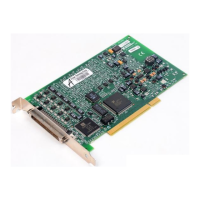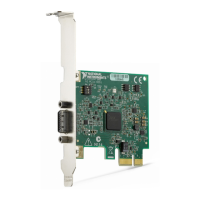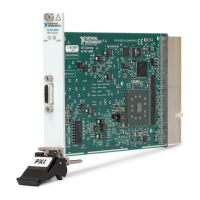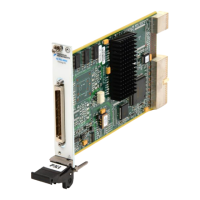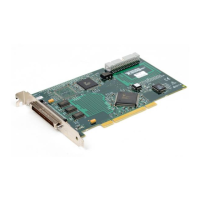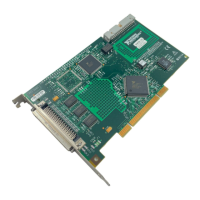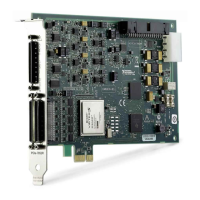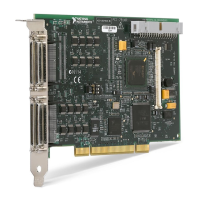Chapter 3 Signal Connections
NI 660x User Manual 3-14 ni.com
Counter n Auxiliary Signal
You can select any PFI or RTSI, as well as many other internal signals as
the Counter n Auxiliary (CtrnAux) signal. Much like this CtrnGate signal,
the CtrnAux signal is configured in edge-detection or level-detection mode
depending on the application performed by the counter. The aux signal can
perform many different operations including starting and stopping the
counter, generating interrupts, and saving the counter contents. You can
also use this signal to control the counting direction in edge-counting
applications.
Figure 3-6 shows the timing requirements for the CtrnAux signal.
Figure 3-6. Timing Requirements for the CtrnAux Signal
Counter n Internal Output Signal
The Counter n Internal Output (CtrnInternalOutput) signal is available only
as an output on the CTR n OUT pin, where n is the number of your counter.
For example, the Ctr0InternalOutput signal is available as an output on the
PFI 36/CTR 0 OUT pin. You can also route the CtrnInternalOutput signal
to other locations on the board, such as RTSI.
The CtrnInternalOutput signal reflects the terminal counter (TC) of
counter n. The counter generates a terminal count when its count value
rolls over. The two software-selectable output options are pulse on TC and
toggle output polarity on TC. The output polarity is software-selectable
for both options. This output is set to high-impedance at startup.
Table 3-7. Minimum Pulse Width for CtrnAux Internal Signals
Parameter Minimum
Minimum
with RTSI
Connector
Description
Tauxpw 5 ns 5 ns CtrnAux minimum pulse width
CtrnAux
Tauxpw
Tauxpw

